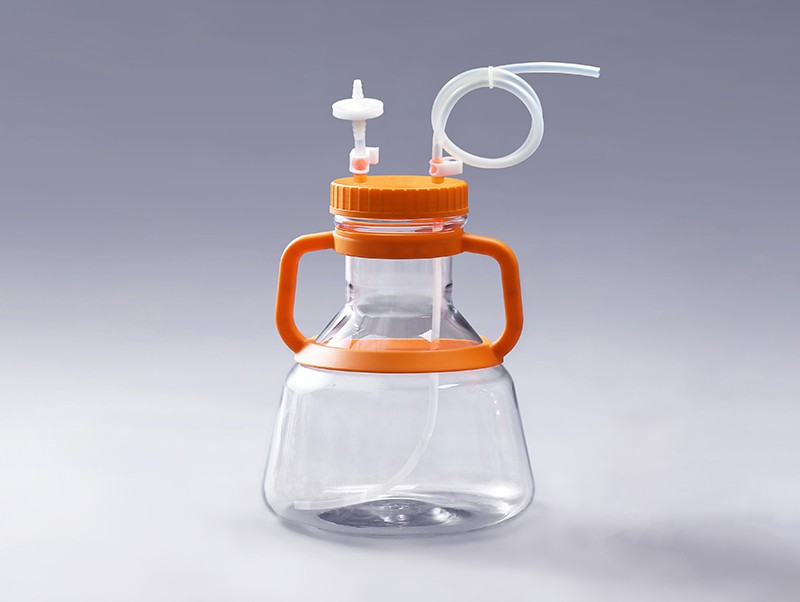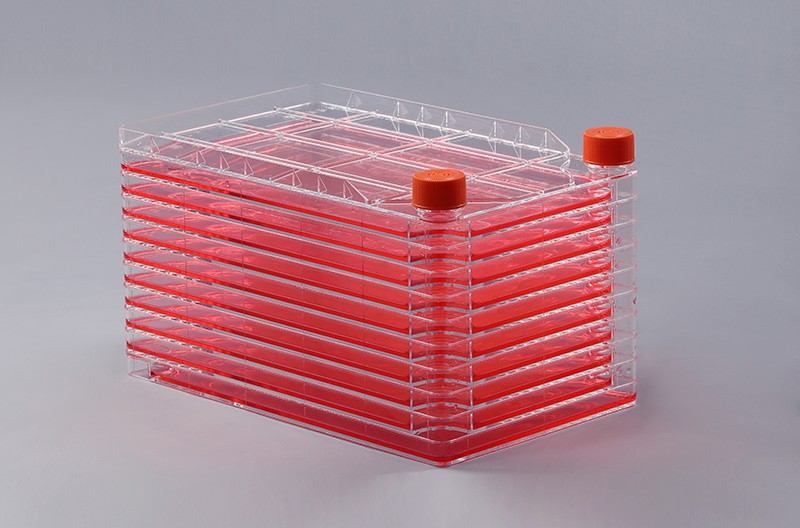Payload Delivery: Engineering Immune Cells to Disrupt the Tumour Microenvironment
有效载荷传递:改造免疫细胞以破坏肿瘤微环境
Cell-based therapies composed of genetically engineered immune cells have huge potential for treating cancer. T cells modified to express tumour-targeting receptors have been proven to be highly effective against blood cancers but not solid malignancies. Using innovative genetic modifications, we have the potential to enhance solid tumour targeting by cell-based therapies and fulfil this unmet clinical need. Different genetic engineering approaches have been proposed, each designed to overcome specific hurdles associated with solid tumours. In this review, we discuss the novel ways of engineering immune cells to enhance efficacy against solid tumours, and how this has led to a new era of cell-based therapies, capable of delivering immunotherapeutic payloads that disrupt the immunosuppressive tumour microenvironment and generate concerted anti-tumour immune responses.
由基因工程免疫细胞组成的基于细胞的疗法在治疗癌症方面具有巨大的潜力。经修饰以表达肿瘤靶向受体的 T 细胞已被证明对血癌非常有效,但对实体恶性肿瘤无效。使用创新的基因修饰,我们有可能通过基于细胞的疗法增强实体瘤的靶向性,并满足这一未满足的临床需求。已经提出了不同的基因工程方法,每种方法都旨在克服与实体瘤相关的特定障碍。

Over the past decade, we have seen huge advances in the use of cell-based therapies for the treatment of cancer. Whereas previously cell-based therapies were limited to using non-engineered cells, which would struggle to survive beyond in vitro expansion and rapidly succumb to the immunosuppressive effects of the tumour in vivo, we now have the technology to engineer immune cells with selected genes that markedly bolster their effector function in vivo and counteract the adverse conditions of the TME. Moreover, we can create polycistronic constructs capable of stably transducing a cell with multiple genes simultaneously, providing a continuous supply of natural and/or recombinant gene products for optimal performance.
In addition, approaches to engineering immune cells for adoptive cell therapy are advancing beyond just membrane-bound cytotoxicity receptors that only enhance the tumour targeting capacity of the cells that express it, and more towards secretable immunotherapy payloads, including effector cell engagers, checkpoint blocking antibodies, survival promoting cytokines, and immune orchestrating cytokines. This new wave of adoptive cell therapy uses immune cells as tumour homing cargo vessels for the targeted delivery of both membrane-bound and secretable immunotherapeutic agents directly into the TME. Importantly, these cells are no longer confined by direct cell–cell contact and can elicit their effects at range, disrupting the immunosuppressive cocoon of the tumour and converting it into a pro-immunogenic environment for anti-tumour immune cells to thrive, thus generating an orchestrated immune response against the tumour.
Although the majority of research in this field has focussed primarily on armouring αβ T cells, many of the engineering concepts described in this review are applicable to other immune chassis. Non-alloreactive cytotoxic effector cells such as NK cells and γδ T cells are currently being developed as a platform for “off-the-shelf” engineered cell-based products [139,140,141,142,143]. Furthermore, the potential to express CARs in macrophages and B cells has also been tested, exploiting alternative immune cells that function in antigen presentation, phagocytosis, and antibody production [144,145,146].
Through the co-expression of certain genes in the appropriate immune cell chassis, there is potential to disrupt the TME and improve the overall efficacy of cell-based therapies against solid malignancies. Although huge advances have been made, we have yet to see whether these approaches are effective in the clinic and many substantial hurdles still remain; in particular, current state-of-the-art engineering vectors and GMP-compliant large-scale manufacture of transduced cells for adoptive transfer present ongoing technical and financial challenges. More importantly, the rare but life-threatening toxicities associated with side effects such as cytokine release syndrome and on-target off-tumour cytotoxicity pose an underlying safety concern. Furthermore, technologies such as CARs and BiTEs are highly dependent on tumour antigen expression and thus can be blunted by the phenomena of antigen loss often associated with solid tumours. Downregulation of MHC class I expression and outgrowth of antigen low/negative malignant cells following immune selection pressure remain important limitations in this field and areas of ongoing research.
在过去的十年中,我们已经看到使用基于细胞的疗法治疗癌症的巨大进步。以前基于细胞的疗法仅限于使用非工程细胞,这些细胞将难以在体外扩增后存活并在体内迅速屈服于肿瘤的免疫抑制作用,而我们现在拥有利用选定基因设计免疫细胞的技术显着增强其体内效应器功能并抵消 TME 的不利条件。此外,我们可以创建多顺反子构建体,能够同时稳定地转导具有多个基因的细胞,提供持续供应的天然和/或重组基因产品以获得最佳性能。
此外,为过继细胞疗法设计免疫细胞的方法正在超越仅能增强表达它的细胞的肿瘤靶向能力的膜结合细胞毒性受体,而是更多地朝着可分泌的免疫疗法有效载荷发展,包括效应细胞接合剂、检查点阻断抗体、促进存活的细胞因子和免疫协调细胞因子。这一新的过继细胞治疗浪潮使用免疫细胞作为肿瘤归巢货船,将膜结合和可分泌的免疫治疗剂直接靶向递送至 TME。重要的是,这些细胞不再受细胞与细胞直接接触的限制,可以在一定范围内引发它们的影响,

尽管该领域的大部分研究主要集中在装甲 αβ T 细胞上,但本综述中描述的许多工程概念也适用于其他免疫底盘。非同种异体反应性的细胞毒性效应细胞如NK细胞和γδT细胞,目前正在开发作为“现成的,货架”工程化的基于细胞的产品[一个平台139,140,141,142,143 ]。此外,还测试了在巨噬细胞和 B 细胞中表达 CAR 的潜力,利用在抗原呈递、吞噬作用和抗体产生中起作用的替代免疫细胞 [ 144 , 145 , 146 ]。
通过在适当的免疫细胞底盘中共表达某些基因,有可能破坏 TME 并提高基于细胞的疗法对实体恶性肿瘤的整体疗效。尽管已经取得了巨大的进步,但我们还没有看到这些方法在临床上是否有效,并且仍然存在许多实质性障碍;特别是,当前最先进的工程载体和符合 GMP 的大规模生产用于过继转移的转导细胞存在持续的技术和财务挑战。更重要的是,与细胞因子释放综合征和靶向肿瘤外细胞毒性等副作用相关的罕见但危及生命的毒性构成了潜在的安全问题。此外,CARs 和 BiTEs 等技术高度依赖于肿瘤抗原的表达,因此通常与实体瘤相关的抗原丢失现象可能会减弱。免疫选择压力后 MHC I 类表达的下调和抗原低/阴性恶性细胞的生长仍然是该领域和正在进行的研究领域的重要限制。
关键词: cancer; solid tumours; cell therapy; immunotherapy; engineered immune cells; CAR T cell; armoured CAR T cell; payload delivery; tumour microenvironment; immunosuppression。癌症;实体瘤;细胞疗法;免疫疗法;工程化免疫细胞;CAR T细胞;装甲 CAR T 细胞;有效载荷交付;肿瘤微环境;免疫抑制
来源:MDPI https://www.mdpi.com/2072-6694/13/23/6000/htm

上一篇: 细胞工厂内出现黑胶虫污染怎么办
下一篇: 细胞摇瓶发酵后期菌丝球分散的原因分析